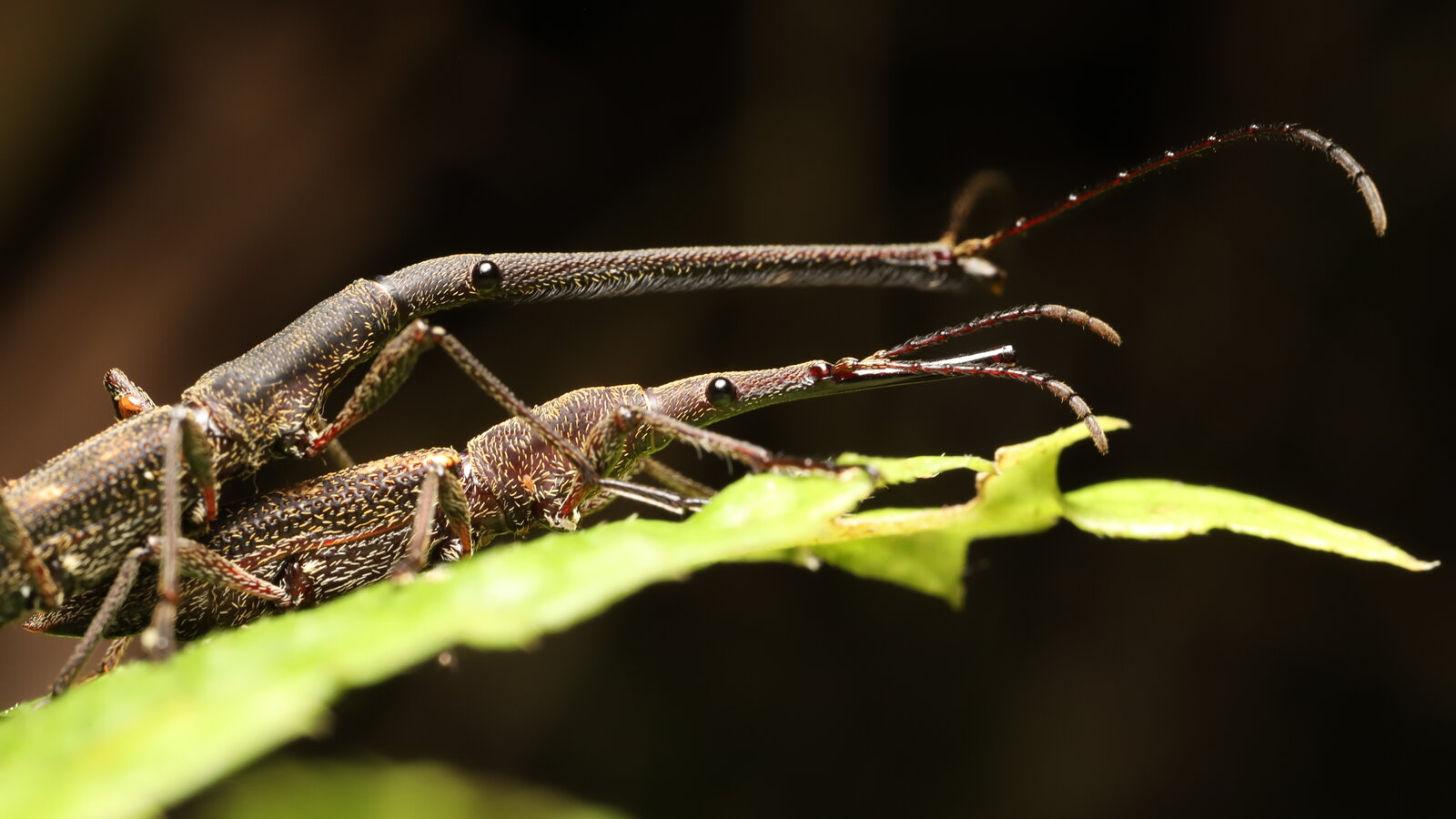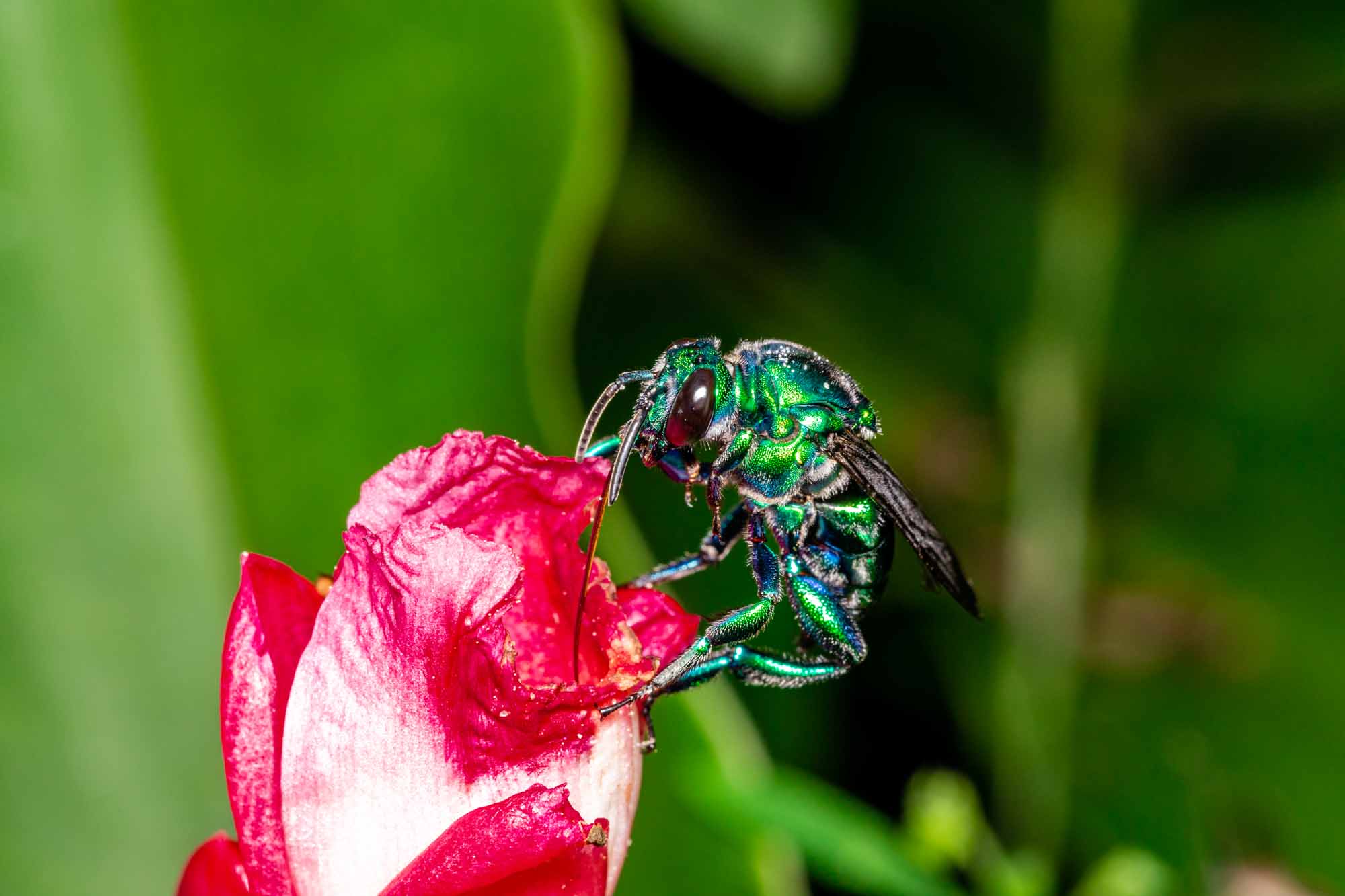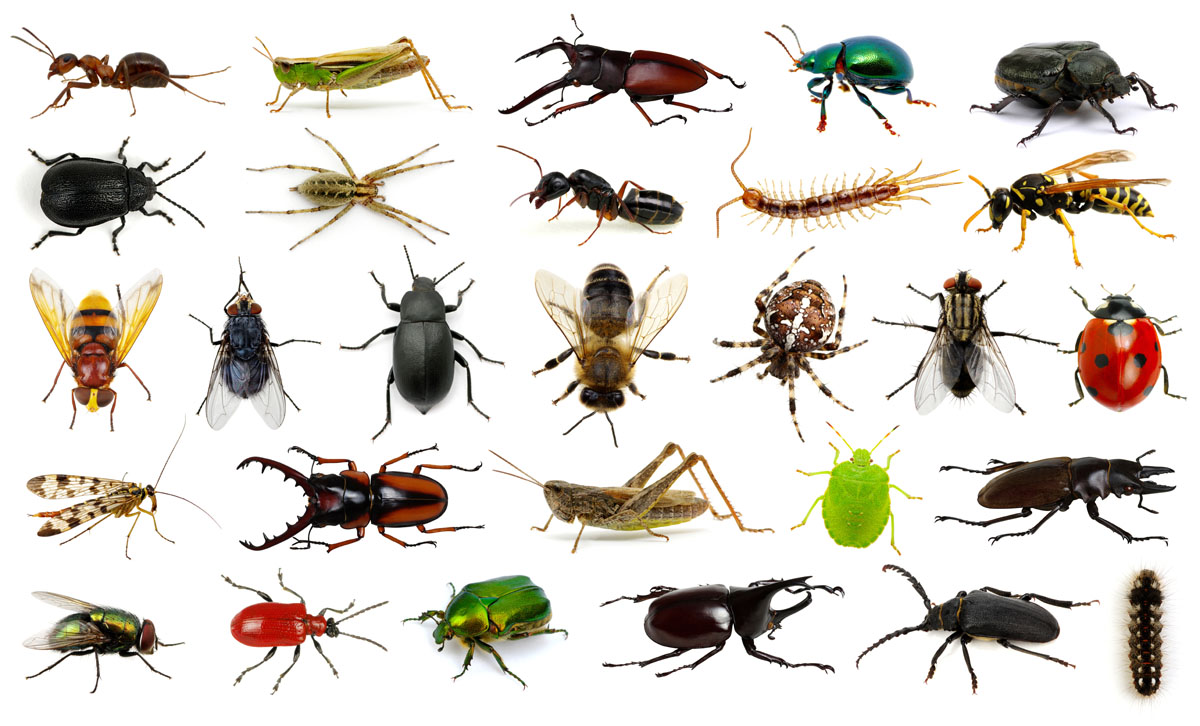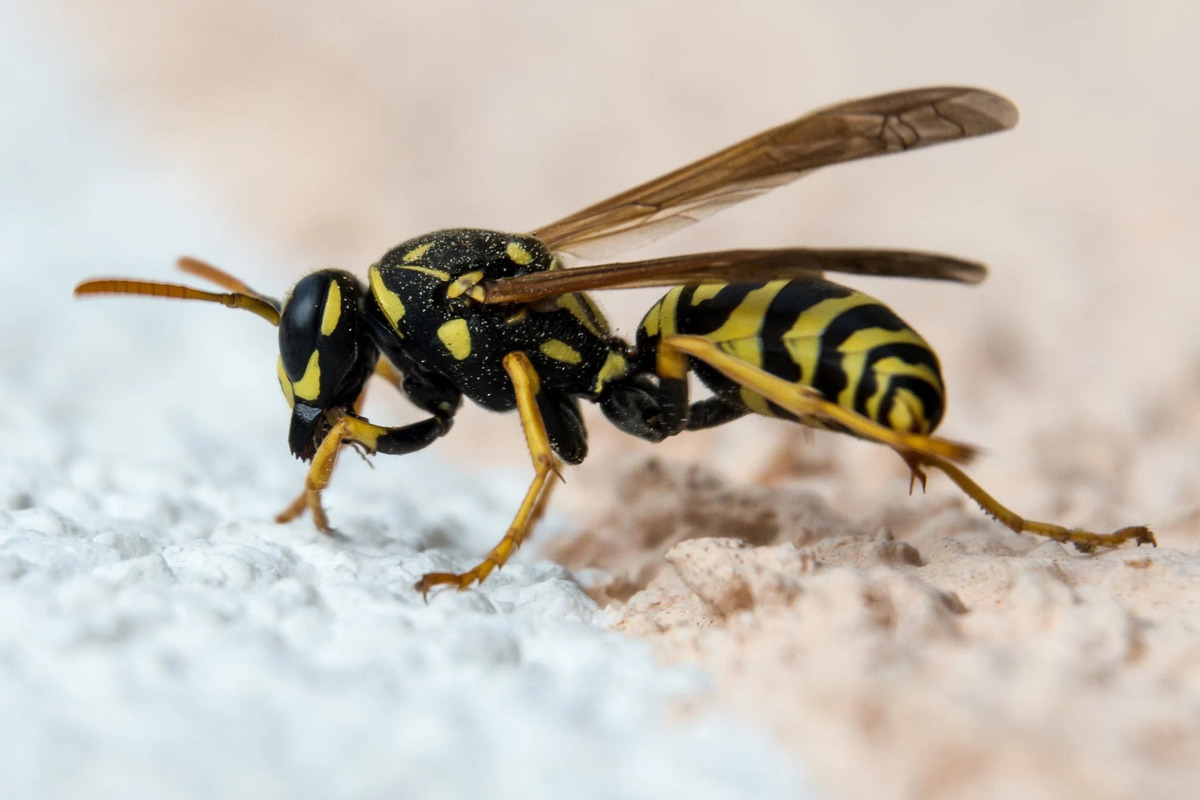Home>Gardening News and Trends>Latest News>How Many Wings Do Insects Have
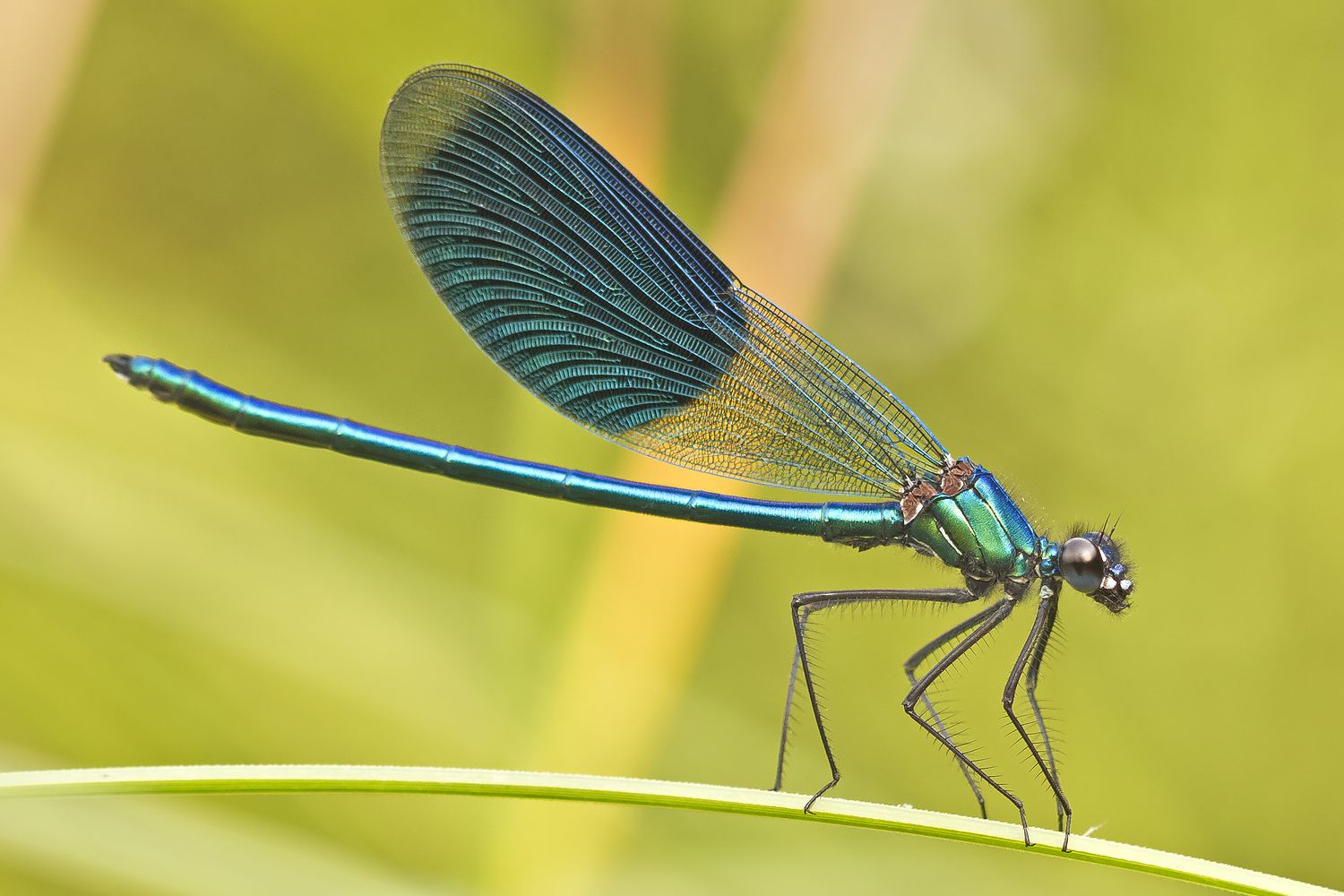

Latest News
How Many Wings Do Insects Have
Modified: January 22, 2024
Read the latest news on how many wings insects have and discover fascinating insights into their unique anatomy.
(Many of the links in this article redirect to a specific reviewed product. Your purchase of these products through affiliate links helps to generate commission for Chicagolandgardening.com, at no extra cost. Learn more)
Table of Contents
Introduction
Insects, with their diverse shapes, colors, and behaviors, are fascinating creatures that have piqued the curiosity of humans for centuries. One striking feature that sets insects apart from other animals is their ability to fly, achieved through the presence of wings. But how many wings do insects actually have? In this article, we will delve into the intricate world of insect anatomy and explore the various types and functions of insect wings.
With over a million known species, insects make up the largest and most diverse group of organisms on Earth. Their success can be attributed, in part, to their ability to adapt to different environments and exploit a wide range of ecological niches. Central to their adaptability is their unique body structure, which includes a distinct set of wings.
Before we dive into the subject of insect wings, let’s first understand the overall anatomy of insects. Insects are characterized by a three-part body plan consisting of a head, thorax, and abdomen. The head houses the sensory organs and mouthparts, while the thorax serves as the locomotor region, housing the legs and wings. Lastly, the abdomen contains the digestive, reproductive, and respiratory systems.
Wings are specialized outgrowths of the insect exoskeleton and are primarily used for flight. These remarkable appendages allow insects to occupy different ecological niches, escape predators, find mates, and seek out food sources. The presence of wings has provided insects with a distinct advantage over other organisms, enabling them to colonize diverse habitats and thrive in various ecosystems.
Interestingly, not all insects have wings. Some insects, like silverfish and fleas, have lost their wings through evolutionary processes, adapting to a more specialized or ground-dwelling lifestyle. However, the majority of insects possess wings in one form or another.
In the following sections, we will explore the different types of insect wings, their functions, the development of wings in insects, and the variation of wings among different species. So, let’s spread our metaphorical wings and embark on this fascinating journey into the world of insect flight!
Anatomy of Insects
Before we delve into the specifics of insect wings, let’s take a closer look at the anatomy of these fascinating creatures. Insects have a segmented body consisting of three main parts: the head, thorax, and abdomen.
The head of an insect is equipped with a pair of compound eyes, which provide them with a wide field of vision, allowing them to detect movement and perceive their surroundings. In addition to compound eyes, many insects also possess simple eyes, known as ocelli, which help to detect light and regulate their flight patterns.
Beneath the compound eyes, insects have a pair of antennae, which play a crucial role in sensory perception. Antennae are equipped with sensory receptors that allow insects to detect chemicals, vibrations, and changes in temperature, aiding in navigation, communication, and finding food sources.
The mouthparts of insects can vary greatly depending on their feeding habits. Some insects, like butterflies and bees, have a long, tubular proboscis used for sipping nectar. Others, such as mosquitoes and fleas, have mouthparts adapted for piercing and sucking blood. Insects like beetles and grasshoppers have chewing mouthparts for consuming plant material.
The thorax of an insect is the central region of the body where the wings and legs are attached. It consists of three segments: the prothorax, mesothorax, and metathorax. Each segment has a pair of legs, resulting in six legs in total. In addition to the legs, insects have two pairs of wings attached to the mesothorax and metathorax.
The abdomen of an insect is a flexible and elongated body region. It houses various organs, including the digestive system, the reproductive system, and the respiratory system. In some insects, the abdomen may also have specialized structures like stingers or ovipositors.
It’s worth noting that the exoskeleton of insects, made up of a tough, chitinous substance, provides structural support and protection for the body. The exoskeleton is shed periodically during growth, allowing the insect to grow larger.
Understanding the anatomy of insects provides a foundation for comprehending the role and function of their wings. In the next section, we will explore the diverse types of wings found in insects and how they contribute to their remarkable ability to fly.
Wings in Insects
One of the most fascinating features of insects is their ability to fly, made possible by the presence of wings. Insects are the only invertebrates capable of sustained flight, and their wings come in a variety of shapes, sizes, and textures.
Insects have two pairs of wings, making a total of four wings. The wings attach to the thorax, specifically the mesothorax and metathorax segments. The mesothoracic wings, known as the forewings or tegmina, are typically larger and more rigid. The metathoracic wings, known as the hindwings, are usually smaller and more delicate.
The forewings and hindwings of insects are connected by a series of hooks or barbs, creating a synchronized movement when the wings are in flight. This structure allows insects to maintain stability and maneuverability during flight.
In terms of texture, insect wings can vary greatly. Some wings, like those of butterflies and moths, feature scales that give them vibrant colors and intricate patterns. These scales serve multiple purposes, including thermoregulation, camouflage, and mate attraction.
Other insect wings, such as those of bees and wasps, have a more membranous appearance, similar to delicate windowpanes. These transparent wings provide efficiency during flight by minimizing weight while still providing enough surface area for lift.
It’s important to note that not all insects use their wings solely for flight. Some insects, like beetles, have hardened forewings called elytra that protect the hindwings and body when at rest. These elytra are lifted when the insects take flight, enabling the hindwings to provide the necessary lift and movement.
Furthermore, there are insects that have reduced or modified wings, rendering them flightless. These adaptations have allowed some insects to navigate different environments and exploit specialized niches, such as burrowing in the ground or swimming in water.
The presence of wings in insects has played a significant role in their evolutionary success. Flight has allowed insects to disperse more rapidly, colonize diverse habitats, and access new resources. Additionally, it has enabled them to escape predators, locate mates, and forage for food effectively.
In the next section, we will explore the various types of insect wings in more detail and examine how their specialized functions contribute to the survival and success of different insect species.
Types of Insect Wings
Insects exhibit a remarkable diversity of wing types, each adapted to suit the specific needs and behaviors of different species. Let’s explore some of the common types of insect wings found in the insect world.
1. Membranous Wings: This is the most common type of wing in insects. Membranous wings are thin, flexible, and translucent, allowing for efficient flight. Bees, wasps, flies, and butterflies are examples of insects with membranous wings.
2. Scaled Wings: The wings of butterflies and moths are adorned with tiny, overlapping scales that give them vibrant colors and complex patterns. These scales not only provide protection but also aid in thermoregulation and mate attraction.
3. Elytra: Elytra are the modified forewings found in beetles. These hardened structures serve as protective covers for the hindwings and body, offering defense against potential threats. Beetles can lift their elytra during flight to expose their hindwings.
4. Hemelytra: Hemelytra are a unique type of wing found in true bugs, such as stink bugs and water bugs. The basal half of the forewings is leathery or sclerotized, while the apical half is membranous. When at rest, the hemelytra overlap, forming a protective shield.
5. Tegmina: Tegmina are modified forewings found in orthopterans, including grasshoppers and crickets. They are leathery or parchment-like, providing strength and protection during flight. Tegmina also serve as resonators for producing sound during mating calls.
6. Reduced Wings: In some insect species, wings may be greatly reduced or absent. This adaptation has enabled flightless insects to thrive in specialized environments. For example, ants and termites have wings only during the mating season, after which they shed their wings and establish new colonies.
These are just a few examples of the diverse array of insect wings. It’s important to note that wing structure and function can vary significantly even within the same insect order or family.
The wide variety of insect wings demonstrates the remarkable adaptability of these creatures. Different wing types have evolved to suit specific ecological niches, feeding habits, mating strategies, or defensive mechanisms. Whether it’s the delicate and colorful wings of butterflies or the protective elytra of beetles, each wing type is finely tuned to enhance the survival and reproduction of the insect species.
In the next section, we will explore the functions and importance of insect wings in more detail, shedding light on the incredible role they play in the lives of these remarkable creatures.
Function of Insect Wings
Insect wings serve a wide range of functions that are crucial to the survival and success of these remarkable creatures. Let’s explore the various roles that insect wings play in their daily lives.
1. Flight: The primary function of insect wings is to enable flight. The ability to fly provides insects with numerous advantages, including the ability to find food sources, escape predators, and locate suitable mates. Insects that can fly have an increased range of movement and can colonize different habitats, allowing them to exploit resources that are inaccessible to non-flying organisms.
2. Feeding: Insect wings aid in feeding by allowing insects to access food sources efficiently. Many insects, such as butterflies and bees, have specialized mouthparts for sipping nectar from flowers. Their wings enable them to hover and maintain a stable position while feeding, even in challenging environmental conditions.
3. Mating and Reproduction: Insect wings play a crucial role in mating and reproductive behaviors. Males often use their wings to perform elaborate courtship displays and attract potential mates. In some species, the movement and vibrational patterns produced by the wings are significant components of the mating ritual. Wings also allow insects to search for and locate mates over long distances.
4. Defense: Insect wings can serve as a form of defense against predators. When threatened, many insects can rapidly take flight, using their wings to escape and evade capture. Some species may also employ wing displays, exposing vibrant patterns or eye-like markings to startle or confuse predators.
5. Thermoregulation: Insect wings are involved in thermoregulation, helping insects maintain their body temperature. In cooler environments, insects can orient their wings to capture sunlight and absorb heat, while in warmer environments, they can adjust their wing position to minimize heat absorption. This adaptability allows insects to regulate their body temperature and optimize metabolic processes.
6. Communication: In some insect species, wing movements are essential for communication. Crickets, for example, produce chirping sounds by rubbing their wings together, attracting potential mates or establishing territories. The wing vibrations of bees and wasps can also convey important signals to other members of their colony.
These are just a few examples of the critical functions performed by insect wings. The remarkable adaptability and versatility of these appendages allow insects to survive and thrive in diverse environments.
In the next section, we will explore how wing development occurs in insects and the fascinating variations that exist among different species.
Wing Development in Insects
The development of wings in insects is a highly regulated and intricate process that occurs during the later stages of their growth and development. Let’s take a closer look at how wings develop in these remarkable creatures.
Wing development begins during the larval or nymphal stages. In these early stages, the wings are not fully formed but exist as small wing buds or primordia. These wing buds contain groups of cells that will eventually differentiate into the various tissues and structures of the wings.
As the insect undergoes metamorphosis, transitioning into the pupal stage (in holometabolous insects, such as butterflies) or the final instar (in hemimetabolous insects, such as grasshoppers), the wing buds become more prominent and develop further. During this stage, intricate networks of veins, which provide structural support and nutrient supply to the wings, begin to form.
Once the insect emerges as an adult, the wings undergo an expansion and drying process. They unfurl, become inflated with air or fluid, and harden, allowing the adult insect to fly effectively. In some cases, the wing expansion is aided by the pumping of body fluids into the wings, helping them reach their full size and functionality.
Interestingly, the development of wings is regulated by complex genetic mechanisms. Specific regulatory genes control the timing and pattern of wing development, ensuring that the wings form in the appropriate location and time during the insect’s development. Mutations or alterations in these regulatory genes can lead to variations in wing shape, size, or the complete absence of wings.
The process of wing development can also be influenced by environmental factors such as temperature, nutrition, and hormonal signaling. For example, certain environmental cues trigger the initiation or suppression of wing development in response to favorable or unfavorable conditions.
It’s important to note that the degree of wing development and its functional significance can vary among different insect species. While some insects develop fully functional wings, others may have reduced or modified wings that serve a different purpose or no purpose at all. These variations in wing development reflect the diverse adaptations and lifestyles of different insect species.
In the following section, we will delve into the fascinating variation and specialization of wings among different insect species and explore how these adaptations contribute to their survival and success.
Wing Variation Among Insect Species
In the diverse world of insects, there is a remarkable variation in wing structure and function among different species. These variations reflect the adaptations and lifestyles of each species, allowing them to thrive in various ecological niches. Let’s explore some examples of wing variation in insects.
1. Size and Shape: Insects display a wide range of wing sizes and shapes. Some insects, like dragonflies and damselflies, have large, elongated wings that allow for rapid and agile flight. Others, like tiny parasitic wasps, have incredibly small and delicate wings, suited for their specialized lifestyles. The shape of the wings can also vary, from long and slender to rounded or even angular.
2. Pattern and Coloration: Insect wings can exhibit a dazzling array of patterns and colors. Butterflies and moths are renowned for their intricate wing patterns, which serve purposes such as camouflage, mate attraction, or warning coloration. Some insects have transparent or translucent wings, providing them with a stealthy advantage in their natural environments.
3. Functional Modifications: Insects have evolved various functional modifications to their wings to suit their specific needs. For example, some insects, like beetles, have hardened forewings called elytra that provide protection for the hindwings and body. Insects such as grasshoppers and crickets have modified forewings called tegmina, which serve as resonators for producing sounds during mating rituals.
4. Loss of Wings: In certain insect species, wings have undergone evolutionary reduction or loss. This adaptation often occurs in insects that have specialized lifestyles, such as wingless ants or termites that live exclusively in underground colonies. By losing their wings, these insects allocate more resources to other essential functions, like reproduction or defense.
5. Flightless Adaptations: Some insects have wings that have become reduced or modified, rendering them flightless. This adaptation has allowed them to exploit specific habitats or evolve unique locomotion methods. For instance, water striders have modified wings that function as oars for gliding on the water’s surface, while walking sticks have wings that resemble leaves, providing excellent camouflage.
6. Wingless Developmental Stages: Insects like fleas or silverfish have undergone evolutionary changes leading to the absence of wings in their developmental stages or throughout their entire life cycle. These species have adapted to ground-dwelling or specialized niches that do not rely on flight for survival or reproduction.
The remarkable diversity in wing structures among different insect species highlights the adaptability and evolutionary potential of these incredible creatures. Whether it’s for efficient flight, protection, communication, or camouflage, the variations in wing morphology and function allow insects to thrive in a wide range of environments and lifestyles.
In the next section, we will wrap up our exploration of insect wings and recap the fascinating insights we’ve gained into these extraordinary structures.
Conclusion
Insect wings are marvels of adaptation and evolution, allowing these fascinating creatures to conquer the skies and thrive in diverse habitats across the globe. With their unique wing structures, insects have unlocked the incredible ability to fly, granting them advantages in foraging, reproduction, and survival.
The anatomy of insects, with their segmented body plan and specialized appendages, provides the foundation for the development and function of their wings. From membranous wings to scaled wings, elytra, and reduced wings, the diversity of wing types reflects the incredible adaptability and specialization of insects.
Wings in insects serve a multitude of functions, including flight, feeding, mating, defense, thermoregulation, and communication. They are essential for an insect’s ability to navigate its environment, find resources, and interact with other individuals of the same species.
The development of wings in insects is a highly regulated process, starting from small wing buds and culminating in fully formed, functional wings. Genetic and environmental factors influence wing development, contributing to the remarkable variations observed among different insect species.
From the size and shape of wings to their patterns and coloration, insect wings showcase a dazzling array of adaptations. Some insects have modified wings, functional for specific purposes such as producing sounds or providing protection. Others have undergone evolutionary changes, leading to reduced or lost wings, enabling them to thrive in specialized niches.
Understanding the intricate world of insect wings allows us to appreciate the incredible diversity and complexity of the insect kingdom. It highlights the remarkable adaptability and ingenuity of these creatures, who have harnessed the power of flight to conquer and thrive in their respective habitats.
So, the next time you see a butterfly gracefully fluttering by or hear the rhythmic songs of crickets on a summer night, take a moment to marvel at the wings that make it all possible. Insect wings are truly a testament to the wonders of nature and the incredible possibilities that arise from even the smallest of organisms.

